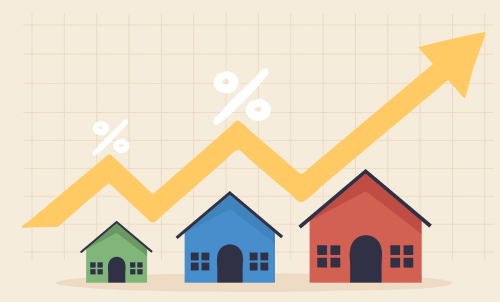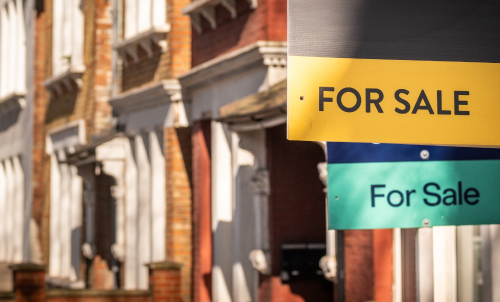
Ex-local authority properties, commonly referred to as ex-council properties, were once owned by local councils before being sold to private individuals under initiatives such as the Right to Buy scheme. This diverse housing stock includes flats, maisonettes and houses in urban areas where demand for rental accommodation is high. Known for their robust construction and straightforward layouts, many ex-council buildings were constructed post–World War II to address pressing housing shortages. Although they may lack the visual flair of modern developments, these properties frequently offer better value for money and reliable long-term returns.
Historical Context and Appeal
After the war, the UK faced a severe housing crisis, prompting large-scale council development. Over the decades, shifting political agendas have led to many of these homes being sold to their occupants at discounted prices. This has created a substantial pool of ex-council properties, varying from low-rise terraces to flats in high-rise blocks. While some were stigmatized due to outdated designs or social issues, such perceptions are also changing as investors realize the potential for healthy rental yields and capital growth, especially in areas undergoing regeneration.
Why Investors Choose Ex-Council Properties
Affordability is a principal draw, as ex-council properties can be 20-40% cheaper than private-sector equivalents in the same locality [1]. Such discounts can translate into stronger rental yields. In some cases, ex-council properties can generate returns of 6-8%, compared to a national average of about 4.5% [2].
Additionally, ex-council properties often feature larger internal dimensions than newer builds, reflecting an earlier design ethos focused on practicality. Tenants appreciate the extra living space and investors benefit from potentially fewer void periods and stable monthly income.
Spotlight on London
London showcases the potential rewards. Boroughs like Hackney, Southwark and Camden contain large estates where ex-council homes are well-situated near transport links.
A two-bedroom ex-council flat in Bethnal Green, for example, might cost significantly less than a private flat of similar size, but yet achieve a comparable rent. Consequently, ex-council units often outperform on yield in sought-after postcodes. Over time, gentrification and infrastructure improvements can also boost property values, enhancing capital return as well.
Key Considerations Before Buying
- Lender Criteria
Some mortgage providers hesitate to finance flats in high-rise ex-council blocks or those with blocks with a high proportion of remaining council-owned units. A specialist broker may be essential to help secure a loan in this type of situation.
- Lease Length
Many ex-council flats are leasehold. Short leases (under 80 years) can limit mortgage availability and damage resale prospects. It is worth investigating possible lease extensions beforehand.
- Service Charges
Maintenance of lifts, communal areas and older infrastructure can be costly. It is worth reviewing the building’s management records for upcoming major works.
- Property Condition
Though solidly built, some blocks suffer from deferred maintenance. A thorough survey can reveal issues, from outdated wiring to possible structural defects.
- Local Market Dynamics
Find out about regeneration projects or planned transport upgrades, which can often raise demand and property values.
Financing Strategies
Mortgages for ex-council properties can be more challenging to obtain; having a deposit of at least 25% is advisable. Certain lenders are more flexible than others with non-standard constructions or higher floors. A broker experienced in ex-council property can help identify which banks are most open to these properties and streamline the application process.
Tenant Demand and Profiles
Ex-council homes generally attract a diverse tenant base, including students, young professionals and essential workers. Families may prefer ex-council houses or maisonettes with extra living space or gardens. Because these properties were designed for functionality, they tend to feature practical layouts, ample storage and decent sound insulation, qualities that help retain tenants over the long term.
Exit Strategies and Capital Growth
While ex-council properties might not appreciate at the same pace as other properties, they can still achieve consistent capital growth, particularly when located in gentrifying districts. Infrastructure improvements and private redevelopment can often lift the broader neighbourhood, boosting property values.
Light refurbishments, such as modernizing kitchens or bathrooms, can also enhance appeal and rental potential. Given that many ex-council flats are spacious, minor cosmetic upgrades may deliver a notable uplift in rent and, by extension, overall yield.
Pros and Cons of Ex-Council Investments
Pros
- Lower Purchase Costs: Discounted prices allow a more attractive entry point.
- Stronger Yields: Affordable acquisition often translates into higher rent-to-price ratios.
- Solid Demand: Tenants value good transport connections and competitive rents.
- Space Efficiency: Early council designs emphasized functionality, offering larger layouts.
Cons
- Financing Hurdles: Some lenders are wary of certain types of block or short leases.
- Service Charge Surprises: Older estates may face sudden or elevated maintenance costs.
- Stigma: A negative reputation may linger with respect to some developments.
- Incremental Appreciation: Capital growth may be slower and include reliance on upgrades.
Best Practices for Investors
- Conduct Thorough Research: Examine local sales data, rental trends and planned public works that could raise property values.
- Get Expert Advice: A mortgage broker with experience in ex-council properties can help clarify lender requirements and expedite financing.
- Scrutinize Service Charges: Factor in potential major works fees when calculating yields.
- Plans for Upgrades: Budget for renovations that enhance tenant satisfaction and maximize rent. Strategic improvements can substantially increase the property’s appeal.
- Consider Long-Term Goals: If reliable rental income is your priority, these properties can potentially offer stability compared to more volatile segments of the market.
Conclusion: A Viable Route to Steady Returns
Ex-local authority properties can deliver an appealing balance of affordability and rental potential. Their practicality resonates with tenants wanting functional space near employment and transport hubs, while investors can benefit from attractive yields and stable demand. Over time, these homes may also see moderate yet reliable capital appreciation, particularly in areas earmarked for urban renewal.
Navigating challenges such as stricter lender criteria or higher service charges requires thorough due diligence, but for those prepared to make the effort, ex-council homes can anchor a successful buy-to-let portfolio. As the UK grapples with ongoing housing shortages and elevated living costs, accessible and well-located rentals remain a cornerstone of the property market.
By understanding the nuances of ex-local authority stock - from finance to refurbishment - buyers can unlock the potential of these historically undervalued homes, generating both steady income and capital gain over the long term. Ex-local authority properties stand out as a potentially attractive option in a market where affordability and location are paramount. For those who perform thorough research, seek specialized financing advice and consider strategic improvements, these properties can form the foundation of a strong, resilient and profit-generating investment strategy.
FAQs:
Q. What Exactly Are Ex-Local Authority Properties?
A. Ex-local authority (or ex-council) properties are homes — typically flats, houses or maisonettes — that were once owned and managed by the local council. These properties transitioned into private ownership under schemes such as Right to Buy, which offered council tenants the opportunity to purchase their homes at a discount.
Q. Why Are Ex-Local Authority Properties Often Cheaper?
A. Historically, councils sold these homes at discounted prices, contributing to lower resale values compared to privately built housing. Additionally, some ex-council blocks may carry a lingering stigma or require more maintenance, which can keep prices below market averages.
Q. Do Ex-Council Homes Offer Good Rental Yields?
A. They often do. Because the purchase price is lower, rental yields can be higher than the national average. Some ex-council flats can achieve yields in the 6–8% range, making them attractive for buy-to-let investors seeking stable returns.
Q. Are Mortgages Harder to Obtain for Ex-Council Properties?
A. Securing a mortgage can be slightly more complex for ex-council homes, especially in high-rise blocks or where a large proportion of the block is still council owned. However, specialist brokers familiar with ex-local authority stock can potentially help investors find suitable mortgage lenders and products.
Q. What Costs Should I Factor in Besides the Purchase Price?
A. Buyers should budget for service charges (if leasehold) and potential major works in older buildings (e.g., roof repairs, lift maintenance or external cladding improvements). It is also advisable to factor in the cost of any required refurbishments, such as updating the kitchen, bathroom or flooring.
Q. Is the Resale Value of Ex-Council Properties Likely to Rise?
A. While they may not appreciate as quickly as other properties, ex-council homes can still experience steady capital growth, especially in areas undergoing regeneration or improved transport links. Keeping the property well-maintained and ensuring the lease is extended in a timely manner can also enhance its future resale value.










